Biga vs Poolish: Which Is Right for You?
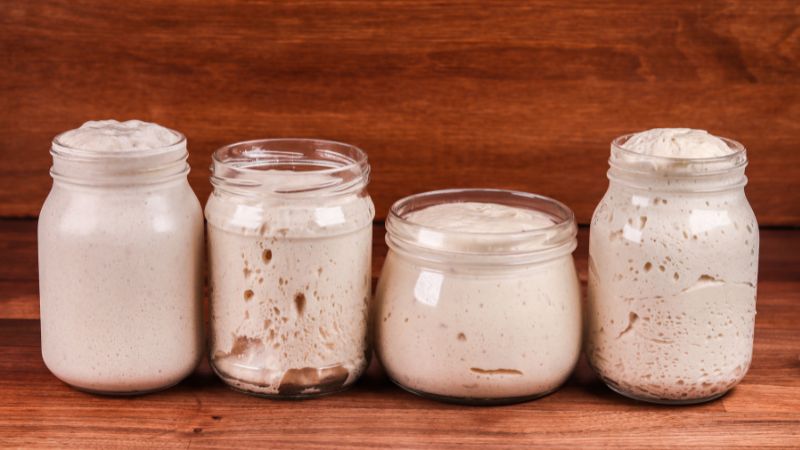

Biga and Poolish are pre-ferments that can make your bread or pizza dough taste good. Bakers are used to add them to improve the flavor and texture.
What are the pre-ferments? Pre-ferments are mixtures of flour, water, and a small amount of yeast. Bakers make them ahead of time and let them sit before adding them to the main dough. This waiting period allows good bacteria to grow, which creates yummy flavors.
What is Biga?

Biga comes from Italy and is a key ingredient in Italian bread. Biga techniques were developed after the introduction of baker's yeast, as Italian bakers sought to recover some of the flavors lost when moving away from traditional sourdough methods.
Like other preferments, Biga is typically made by mixing an amount of water, flour, and a tiny bit of yeast. The mixture is then allowed to ferment for about 12 hours to 16 hours.
What is Poolish?

Poolish originated in Poland in the 19th century. Around 1840, Austrian bakers who emigrated to France brought the Poolish method with them. Now, it has become a staple in French baking, particularly for baguettes and other traditional French breads.
What is Better, Poolish or Biga?

What are the Characteristics of Biga?
Biga is traditionally made with a low hydration level of around 45%.
Its unique fermentation conditions and composition slow down protease enzyme activity, minimizing gluten breakdown during fermentation and prioritizing acetic acid production.
This results in a stronger, more elastic dough, which is particularly beneficial for high-hydration recipes.
Biga offers a wider usability window and is more forgiving during fermentation compared to Poolish. However, its preparation and incorporation into the final dough can be more challenging due to its stiff nature, often requiring a mixer.
Biga imparts a sharper, more pronounced vinegar-like sour flavor to the final product and yields a tougher, more compact crumb structure with larger, fewer air pockets.
What are the Characteristics of Poolish?
Poolish is a liquid preferment consisting of equal parts flour and water by weight (100% hydration), along with a small amount of yeast.
Poolish is easy to prepare and incorporate into the final dough, giving a mild, slightly alcoholic aroma while enhancing the flavor.
It results in a more extensible dough that yields greater oven spring and a softer, more open, and airy crumb structure with many small air pockets.
Why is it Better to Bake Poolish at Home?
Choosing between Poolish and Biga for home baking largely depends on personal preference and baking goals, but Poolish often emerges as the more practical option for home bakers.
Its higher hydration makes it easier to mix by hand and incorporate into the final dough, which is particularly beneficial for those without specialized equipment.
The shorter fermentation time of Poolish fits more conveniently into a home baker's plan compared to Biga's longer fermentation period.
Additionally, Poolish's milder flavor profile is often more appealing for everyday bread and pizzas, especially for those new to preferments.
How to Storage Biga and Poolish?
Biga can be refrigerated for 3-5 days, with optimal use within three days. For longer storage, it can be frozen for up to 3-4 months. When freezing, double wrap in plastic and flatten into a disk. Thaw frozen Biga overnight in the refrigerator before use.
Poolish, being more hydrated, is typically refrigerated for 1-3 days and requires closer monitoring due to faster fermentation. Freezing Poolish is possible but less common.
Recipes Using Biga and Poolish
Both Biga and Poolish can be used to make tasty bread and pizza. Biga is normally used in making bread like ciabatta and Neapolitan-style pizza, while Poolish is used in french baguette.
Ciabatta Bread Recipe

-
Make the sponge:
- Mix 1 cup (130g) all-purpose flour, 1/8 teaspoon instant yeast, and 1/2 cup (120ml) room temperature water.
- Cover and let ferment at room temperature for 12-24 hours.
-
Make the dough:
- Combine the sponge with 2 cups (260g) all-purpose flour, 1 1/2 teaspoons salt, 1/2 teaspoon instant yeast, 3/4 cup (180ml) water, and 1/4 cup (60ml) milk.
- Mix in a stand mixer with a dough hook until it no longer sticks to the sides of the bowl.
-
Rise and fold:
- Let dough rise for 1 hour, then fold it over itself.
- Repeat this process 2-3 more times, letting it rise for 45 minutes between each fold.
-
Shape and bake:
- Shape into loaves on a floured surface.
- Let rise for 30 minutes.
- Bake at 425°F (220°C) for 35-40 minutes until golden and hollow-sounding when tapped.
Neapolitan-Style Pizza Recipe

Ingredients:
- 1 kg (35 oz) Tipo 00 flour
- 600 ml (2.5 cups) room temperature water
- 30 g (5 teaspoons) salt
- 1-2 g (1/2 teaspoon) dry yeast
For the toppings:
- 1/3 cup Easy Pizza Sauce
- 2-3 oz fresh mozzarella cheese
- Fresh basil leaves
- Extra virgin olive oil
Instructions:
-
Make the dough:
- Mix flour, water, salt, and yeast until just combined.
- Knead briefly, then cover and let ferment at room temperature for 8-24 hours.
-
Prepare for baking:
- Preheat your oven to 500°F (260°C) with a pizza stone inside.
- If using a pizza oven, preheat it to its highest setting.
-
Shape the dough:
- Divide the dough into four portions.
- Stretch each portion by hand into a thin round, about 10-12 inches in diameter.
-
Top the pizza:
- Spread a thin layer of pizza sauce over the dough.
- Add torn pieces of fresh mozzarella.
- Drizzle with olive oil.
-
Bake:
- For a regular oven: Bake on the preheated stone for 6-7 minutes until the crust is charred in spots.
- For a pizza oven: Bake for 60-90 seconds, rotating for even cooking.
-
Finish and serve:
- Remove from the oven and immediately add fresh basil leaves.
- Slice and serve hot.
Tips for Baking and Shaping Dough
When shaping pizza dough made with Biga or Poolish, be gentle. The dough will be soft and stretchy. Use your fingertips to press it out, leaving the edges thicker for a puffy crust.
For a crispy bottom, preheat your pizza stone or steel for at least 45 minutes. Slide your pizza onto the hot surface quickly.
Bake at a high temp, around 450-500°F, for a short time. This gives you a crisp exterior and chewy interior.
French Baguette Recipe

Ingredients:
- 500g bread flour
- 10g salt
- 7g active dry yeast
- 350-375ml water
- Optional: 1 tsp honey
For the Poolish:
- 100g bread flour
- 100ml water
- Pinch of yeast
Instructions:
-
Make the Poolish:
- Mix 100g flour, 100ml water, and a pinch of yeast.
- Cover and let ferment at room temperature for 12-16 hours.
-
Make the dough:
- Mix the remaining flour, salt, and yeast in a large bowl.
- Add the Poolish and water (and optional honey).
- Mix until a shaggy dough forms.
-
Rest and fold:
- Let the dough rest for 30 minutes.
- Perform a series of stretches and folds every 30 minutes for 2 hours.
-
Bulk fermentation:
- Let the dough rise at room temperature for 1-2 hours until doubled.
-
Shape:
- Divide the dough into three equal pieces.
- Shape each piece into a baguette, about 14-16 inches long.
-
Final proof:
- Place shaped baguettes on a floured couch or linen cloth.
- Let proof for 30-60 minutes.
-
Preheat oven:
- Set oven to 475°F (245°C) with a baking stone and steam pan.
-
Score and bake:
- Score the baguettes with diagonal slashes.
- Transfer to the hot stone and add water to the steam pan.
- Bake for 20-25 minutes until golden brown.
- Cool on a wire rack before slicing.
Please note that you'll need to tweak your recipes based on the bread you're making.
For sweeter dough, reduce the pre-ferment amount. Too much can make your bread taste sour. Try using 20-30% of your total flour in the pre-ferment.
Enriched doughs with eggs or butter work well with Poolish. The wetter mix blends easily with other ingredients.
For crispy crusts, use more Biga. It helps create a drier dough that bakes up with a great crackle.
Frequently Asked Questions
Can you explain the difference between Biga, Poolish, and sourdough starters?
Biga and Poolish use commercial yeast. They ferment for shorter times than sourdough, which uses wild yeast and bacteria. Sourdough takes longer to develop and has a tangier taste. Biga is thicker, while Poolish is more liquid.
What are the key differences between Biga, Poolish, and Levain in bread making?
Biga is stiff and made with less water. Poolish is very wet and flows like pancake batter. Levain is similar to sourdough and uses wild yeast. Biga and Poolish use commercial yeast. Levain takes longer to ferment than Biga or Poolish.


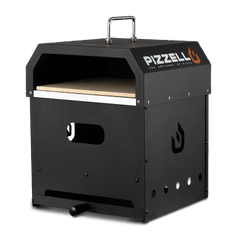
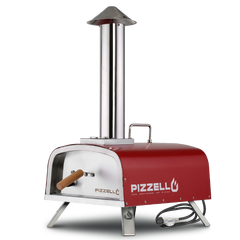
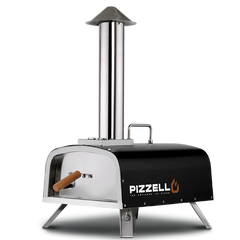
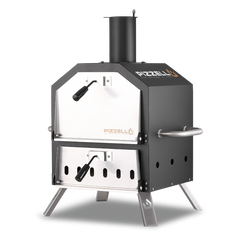




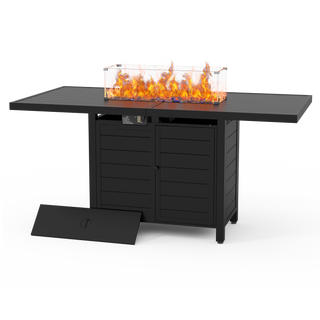
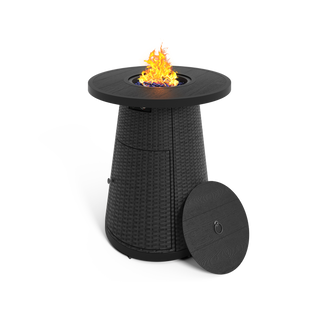

 Aluminum Dining Table
Aluminum Dining Table
 WPC Dining Table
WPC Dining Table
 HDPE Dining Table
HDPE Dining Table
 Cart
Cart
 Gas Burner
Gas Burner
 Hat
Hat
 Apron
Apron
 Swivel Rocker Set
Swivel Rocker Set
 Textilene Chairs
Textilene Chairs
 HDPE Chairs
HDPE Chairs
 Wicker Counter Height Barstools
Wicker Counter Height Barstools
 Metal Counter Height Barstools
Metal Counter Height Barstools


























